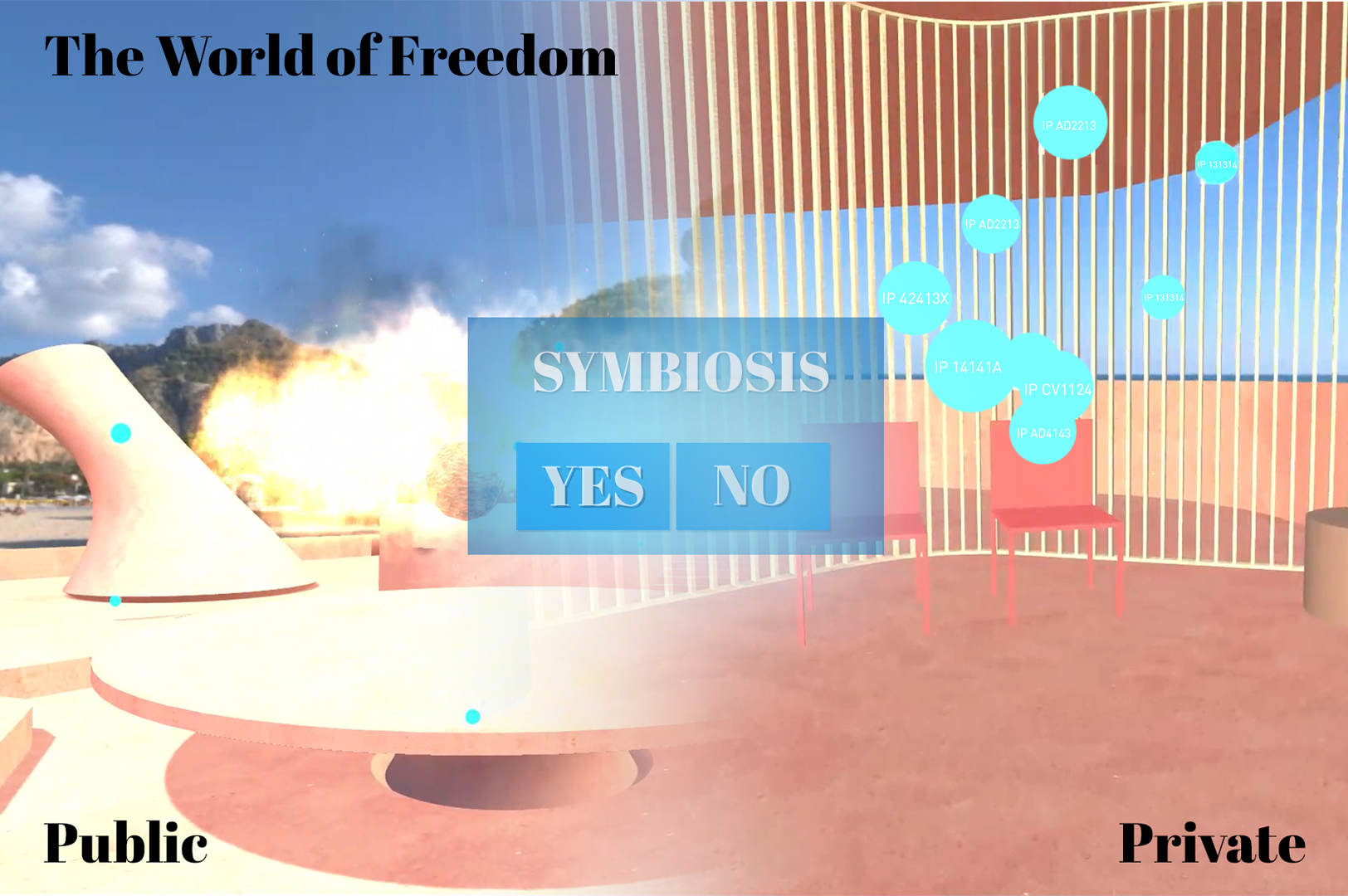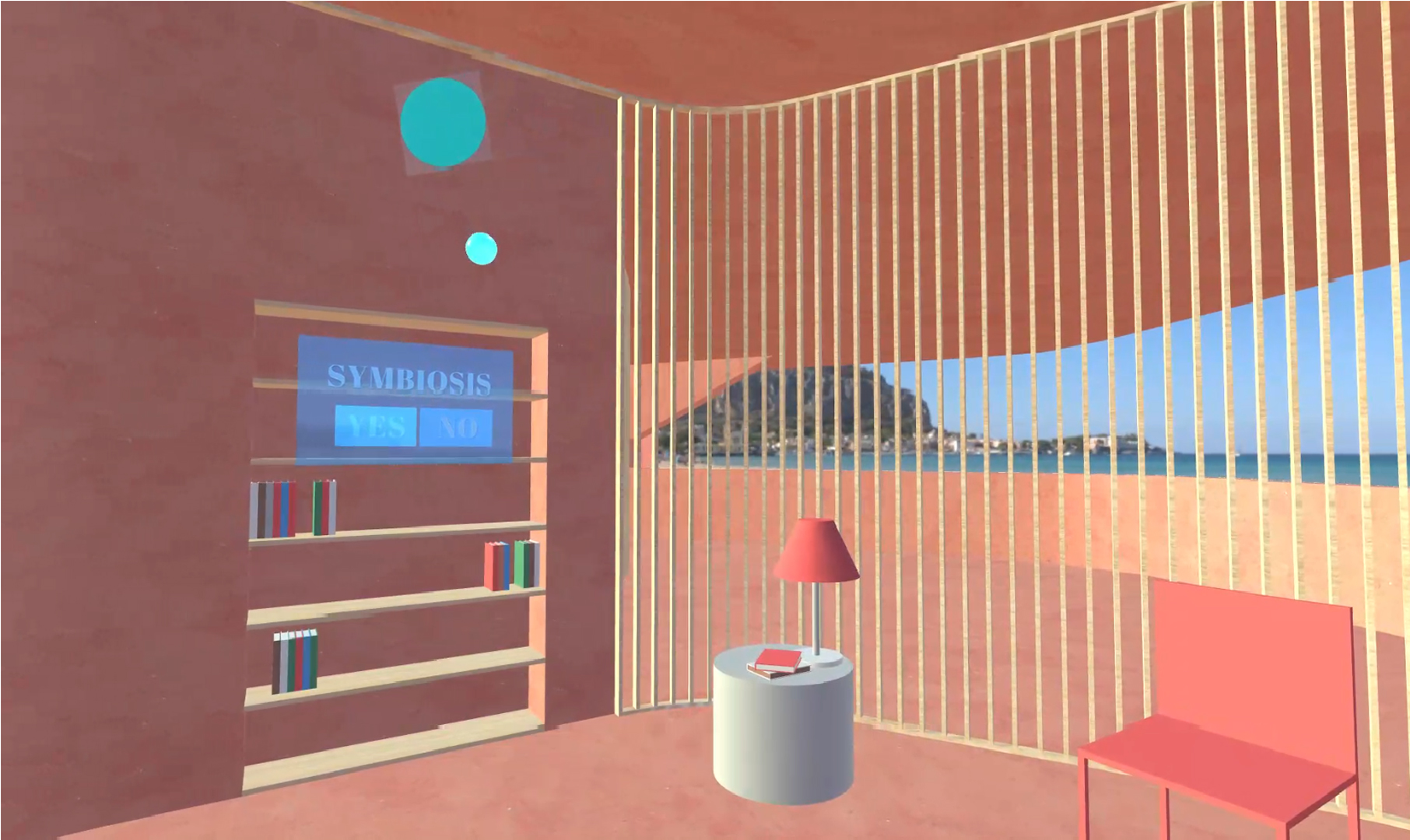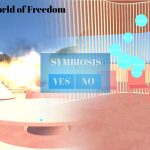Borou Yu, Tiange Zhou, Zeyu Wang, Jiajian Min: The World Of Freedom
Artist(s):
Title:
- The World Of Freedom
Exhibition:
- SIGGRAPH Asia 2020: Untitled & Untied
-
More artworks from SIGGRAPH Asia 2020:


Category:
Artist Statement:
Summary
The World of Freedom is an immersive virtual space. It provides possibilities for people to empathetically imagine a “free” living sociology at the post-pandemic Anthropocene. Technologies support people to live in their identical personal spaces, meanwhile access shared information and areas with neighbors, even those with different faith and beliefs.
Abstract
Indeed, people spend more time on deep thinking since 2020. The questions which ask mainly by the sociologists, now become the topics on the dining table. The debates on social and moral dilemmas are happening intensively 24 hours on the internet. We started to think more about who we are, where we are going, and how we will value the information we have received. Do we have freedom? Shall we believe absolute freedom? Sometimes people directly transform the idea of liberty into democracy. However, shall we also equal freedom to democracy? Since we are all inside this one pandemic bubble, after most people stay at home for a couple of months, we start emerging a global-size collective memory, which makes people more empathetically understand others’ situations. Meanwhile, more and more people have to learn and take experience virtually. The attention of empathy and the new work-from-home mode evokes the initial idea of this virtual reality experience. We start to ask how people could learn and think more effectively in this brand new virtual age? Unity program makes this innovation possible. The innovative architecture modeling could permit a large group of people to experience personal space and sharing areas simultaneously. The sound design is specially designed for the various space sound and the audience’s interactivities. We use this program to build up an immersive and empathetic space that embodies a hypothetical argument of a social dilemma into a virtual manifestation. People might be able to figure out the most meaningful answer by wearing the same shoes. The social distance could also be virtually controlled in this program by counting if the number of participates overload spaces.
Technical Information:
The model is designed and built in the 3d modelling software Rhinoceros, then imported to Unity. Sound clips are pre- composited and imported into Unity, constructing the whole structure of storytelling. The installation for experience constitutes an open space (maximum 3m*3m), a table for laptop, and a VR headset, i.e. Oculus Quest.
Process Information:
In recent days I find a game engine called Godot, in this programming community, when there is an open call to programmers to fix the remaining issues and bugs, the announcement is always underneath the title “Hero wanted.” It is indeed, intriguing. But what is the definition of a hero? Samuel Beckett’s classic drama inspires the name of the engine – Godot. It is a bit ironic since the hero Godot never appears in Beckett’s drama. It is interesting to observe that the hero Godot in the theatre seems to be an outsider, foreigner, or alien of the story’s scope. However, on the contrary, the hero who matches the call of the game engine is someone who rooted in the community and linguistically(including computer language) acquainted. What would be a more effective hero? An insider or outsider? It is counterproductive to choose a
hero either lacks perceptiveness/acknowledgment or restricts oneself to its milieu. One of the ideal versions of this scarce entity is the one who emerges oneself from the milieu that one ties with but is capable of distanced observation, larger- scope rationale, and most significant speculative anticipation. Heuristic innovation could be useful when it emerges during a specific situation, such as the pandemic and social crisis for this moment of the Anthropocene. Besides, the materialized outcome of heuristic art-making is not only the noumenal object. As a team with scientists, artists, and scholars, we aim to make a work that plays a significant role as a media between the present and future stages. Our piece: The World of freedom provides a platform for heroes. At this stage, everyone participates could, in a way, experience a possible future and make their choice of the real tomorrow. The “PTSD “of the potential issues will prevent us from failing in the future.
People have spent more time than ever before on deep thinking since 2020. The questions which are asked mainly by the sociologists, now become topics on the dining table. The debates on social and moral dilemmas are happening intensively 24 hours on the internet. We started to think more about who we are, where we are going, and how we should value the information we have received. The definition of the term “freedom” is altered and shrinked imperceptibly: Do we have freedom? Shall we believe in absolute freedom? Sometimes people directly transform the idea of liberty into democracy. However, shall we also equal freedom to democracy?
Thinking about the election these days, we feel the system which transmits individual will into community decision is precisely designed, while to a certain extent, unclear. In this way, the virtual space stands for an analog for the social system in reality, towards a dark fairy tale. In this way, we hope the audience would experience the feeling of uncertainty, while bearing the belief that our own volition would truly make a difference to the world.
While overloaded, the system protects itself. What if humans become the cache of the system, and get controlled, overridden and macro-readjusted? The situation described here is no more a sci-fi imagination or a physical metaphor. In the time of COVID-19, the principle of social distance sets capacity for physical space in reality. And we might need to get accustomed to the controlled freedom.
Since we are all inside this pandemic bubble, after most people stay at home for a couple of months, we start emerging a global-size collective memory, which makes people more empathetically understanding others’ situations. Meanwhile, more and more people have to learn and take experience virtually. The attention of empathy and the new work-from-home mode evokes the initial idea of this virtual reality experience. We start to ask how people could learn and think more effectively in this brand new virtual age? The time of post-pandemic might never pass. Some phenomena supposed as temporary might become the normality for the world.
We use Unity to build up an immersive and empathetic space that embodies a hypothetical argument of a social dilemma into a virtual manifestation. In this way, we wish to make the experience as a heuristic innovation for the post-pandemic Anthropocene. People might be able to figure out the most meaningful answer by wearing the same shoes. The social distance could also be virtually controlled in this program by counting if the number of participants overload spaces.
To create a complicated architectural environment is not the most difficult step for the project, while to engage the experience, storytelling and the social/philosophical reflection in this space prototype takes the most time and consideration. While there is no explanation on the game rules, on the selection mechanism, on the definition of symbiosis, on the voting system through which individual opinions transform into collective decisions, it takes effort to imply individual freedom, especially when the experience is presented as a video of selected routes instead of free game.
It is our first time collaborating through the Unity3d Cloud. In this way, the most challenging part is to make the sound atmosphere empathetic. Based upon HTRF technology, we try to create an ambisonic system, with sensitive responses to the alternation in direction and interaction with components in the virtual world. When audiences put on the headphones, it would be easier for them to get into an immersive experience, therefore possibly access in-depth thinking.
Other Information:
Inspiration Behind the Project
The World of Freedom is a video demo for an immersive virtual reality experience. It provides possibilities for the audience to empathetically imagine a “free” living sociology in the post-pandemic Anthropocene.
In the time of COVID-19, we are more connected as a community of human beings than ever before, regardless of the difference of cultural or social identity, facing a situation that no one alive has ever met. Changing so rapidly, the situation couldn’t be applied with existing experience or knowledge. Also, it is so sustained that we couldn’t see through the mist, wandering like Ulysses. Some people bear the confidence of breaking the walls, while some are more pessimistic.
This project was created in the beginning of the pandemic time, when people were flooded by the panic of uncertainty, socially, culturally, economically, etc. Conventionally, in turbulent periods in history, people go back to literature, theatre, and music in searching for temporary relief and mental therapy. So we wonder what might be the innovative way of reflecting on the pandemic experience, both for the recent time and in the near future.
Key Takeaways for the Audience
We hope everyone could get their own understanding and perception of the imagined world. Though we design the world with a set social structure, we didn’t want to explain the system explicitly. In this way, we hope the artificial environment tends to be more like the reality, in terms of ambiguity and unexpedity, with expecity.
When we talk about the world of freedom, what we are actually talking about. We believe virtual reality extends the opportunities to discuss social discourse and phenomenon in 2020.
We hope the audiences could take this installation as a dreaming phenomenon, an immersive hypothetical experience, put themselves in different shoes, and look at the community value differently.






